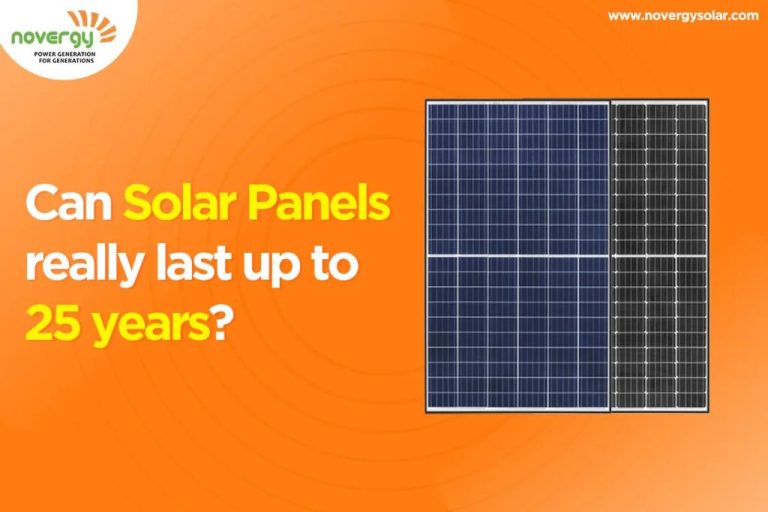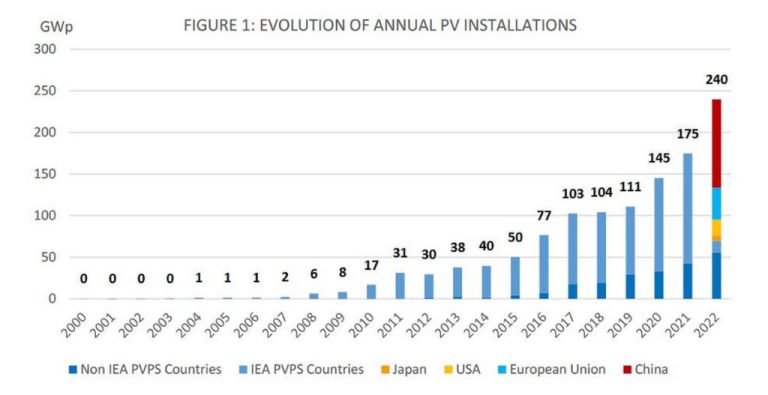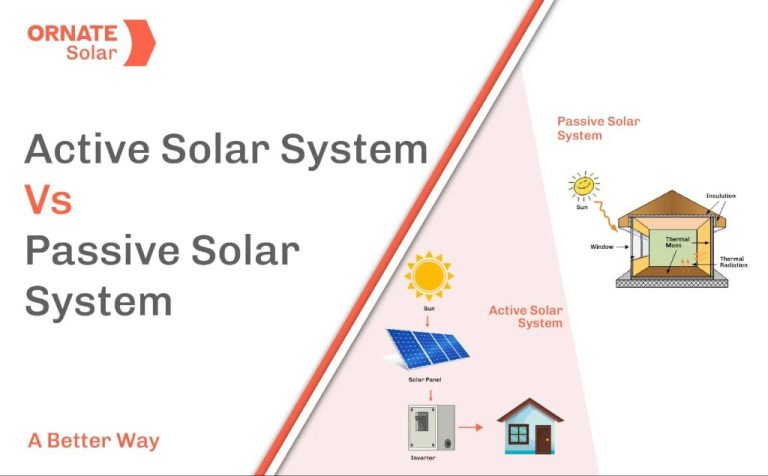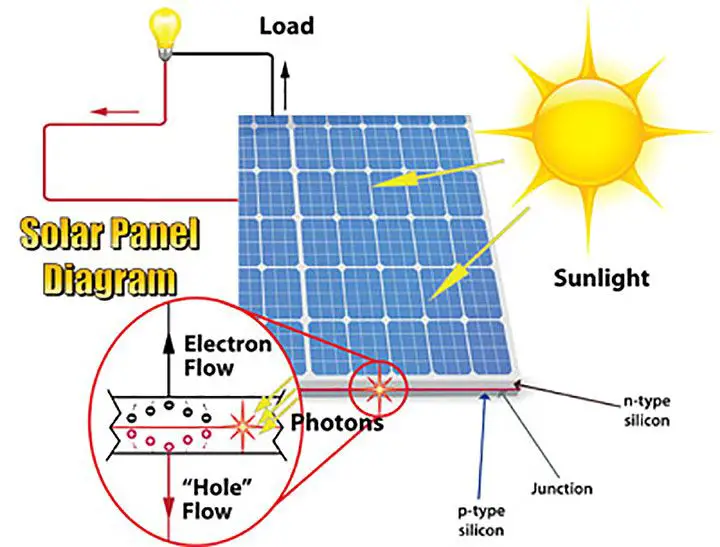Is Solar Energy A Sustainable Energy Option?
Solar energy is the radiant energy from the sun that is captured through sunlight and converted into electricity or heat. By harnessing solar power and using it to generate electricity, heat water, or power other applications, solar energy provides a sustainable and renewable alternative to fossil fuels. Sustainability refers to meeting the needs of the present without compromising the ability of future generations to meet their needs. Developing renewable energy sources like solar is critical for sustainability since fossil fuels are finite and will eventually be depleted. Solar energy is considered sustainable because of its renewability, abundance, and minimal environmental impact.
Solar Energy Technology
Solar energy systems come in two main types: solar photovoltaic (PV) and solar thermal. Solar PV systems convert sunlight directly into electricity using semiconducting materials like silicon that exhibit the photovoltaic effect. When sunlight hits the PV cells, the energy excites electrons and allows them to flow, generating an electric current. PV panels consist of many interconnected PV cells that collectively produce power. The direct current (DC) electricity generated can be used as-is or converted to alternating current (AC) using an inverter for grid connection.
Meanwhile, solar thermal systems harness the sun’s heat rather than light. Solar thermal collectors, often using pipes filled with water or other heat transfer fluid, absorb the sun’s thermal radiation to create steam or heated air or fluid. This heat can be used directly for hot water or space heating or to generate electricity via a steam turbine or other generator. Concentrated solar power (CSP) plants use mirrors to focus sunlight on a central receiver, achieving higher intensities of heat.
Solar Energy Capacity and Growth
The global solar energy capacity has grown exponentially over the past decade. According to the International Energy Agency (IEA), the total solar photovoltaic (PV) capacity worldwide reached 760 gigawatts (GW) by the end of 2020, representing a 22% increase from 2019. The top countries for total installed solar PV capacity include China, United States, Japan, Germany and India.
China accounted for nearly one-third of the global solar PV capacity in 2020 at 253 GW. However, new solar installations in China declined in 2020 due to impacts from the COVID-19 pandemic. Meanwhile, new solar installations increased in the United States, Japan, Germany, Netherlands and Australia in 2020. The United States installed nearly 20 GW of solar PV capacity in 2020, increasing total capacity to 97 GW.
The IEA expects global solar PV capacity to nearly triple and reach over 2,500 GW by 2030 under current energy policies and economic conditions. Much of this growth will be driven by large investments in solar energy in emerging markets across Asia, Africa and Latin America. With supportive policies and accelerated deployment, solar PV capacity could reach up to 4,500 GW globally by 2030 according to an accelerated case by the IEA.
Solar Energy Costs
The cost of solar energy systems has dropped significantly in recent years. Overall, the cost to install solar has fallen by more than 70% over the last decade due to improvements in technology, manufacturing, and economies of scale as the solar industry continues to grow.
For residential solar, the average cost is around $2.50 per watt of installed solar capacity. This means a typical 5 kilowatt solar system for a home would cost around $12,500 before incentives. Commercial and utility-scale solar installations can be less expensive per watt due to bulk purchasing and larger system sizes. The cost of a solar system depends on the size of installation, type of panels and equipment, location, structural needs, and labor costs for installation.
While the upfront cost of installing solar remains high, the lifetime cost of solar energy is very competitive. Factoring in federal tax credits, solar can deliver electricity at an average price of 6-12 cents per kilowatt hour (kWh), which is on par with the national average for electricity from utilities. Most solar panels also come with 25+ year power warranties and will produce free electricity for decades after the system is installed.
Solar’s value proposition improves even more when accounting for its tremendous environmental benefits. Considering factors like climate change and air pollution costs, studies have estimated the true cost-benefit of solar is 2-4x better than suggested by its installed price alone. As solar costs continue to decrease while benefits accumulate over time, solar energy becomes increasingly cost-effective for homes and businesses.
Solar Energy Efficiency
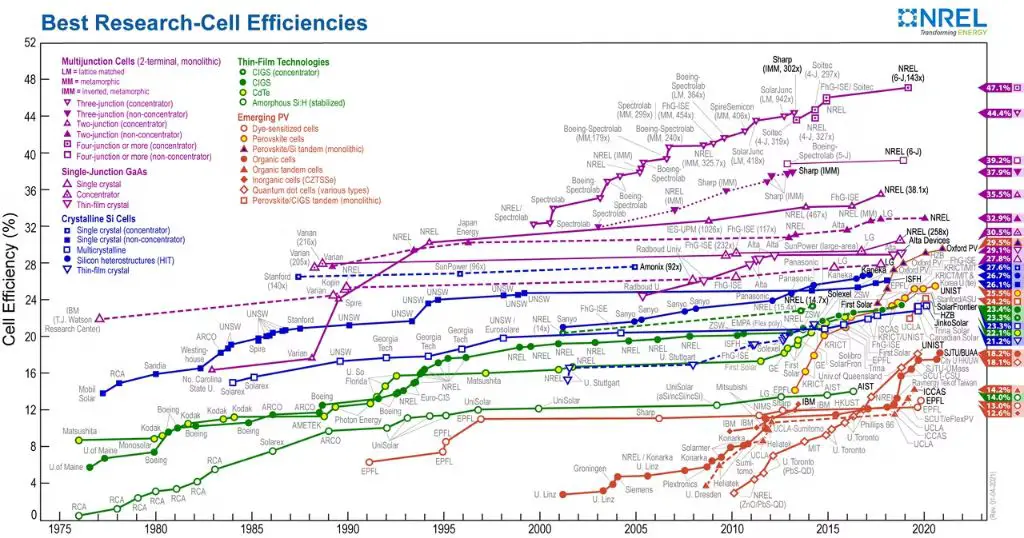
The efficiency of solar panels determines how much of the sun’s energy can be converted into usable electricity. Most mass-market solar panels today have efficiencies between 15-22%. The theoretical maximum efficiency of traditional solar cells is around 33%, but some new multi-junction cells in development can reach over 40%.
By comparison, the average efficiency of coal power plants is around 33%, natural gas plants can reach up to 60%, and nuclear power tops out between 30-40%. So while solar efficiency is improving, it still lags behind other energy sources. However, solar has the advantage of utilizing a free, renewable fuel source in the sun’s energy.
There are a few key factors that affect solar panel efficiency:
- PV cell material – Monocrystalline silicon is most efficient at 15-22%
- PV cell design – Multi-junction cells can capture more of the solar spectrum
- Temperature – Solar efficiency decreases as temperature increases
- Installation angle – Optimal angle to maximize sun exposure
While solar may require a larger footprint than other energy sources, the limitless supply of solar energy makes the lower efficiency an acceptable tradeoff. And with new materials and designs, researchers continue to push the boundaries of solar efficiency higher.
Solar Energy Environmental Impact
Solar energy is often praised for its low environmental impact compared to fossil fuel energy sources like coal, oil, and natural gas. However, solar panels do still have some negative effects on the environment that are important to consider.
In terms of carbon emissions, solar panels generate very little over their lifespan. There are some emissions from the energy required to manufacture the panels, ship them, and install them. But these are minimal compared to the emissions from burning fossil fuels. Most analyses find solar panels offset their own emissions within 1-4 years of operation through the clean electricity they generate after that.
Solar panel systems require a lot of land, so they can contribute to habitat loss and land use change. However, the land underneath solar panels can still be used for grazing or growing certain crops. Proper siting is important to minimize biodiversity impacts. Solar projects should avoid sensitive habitats.
Solar panels also use hazardous materials like cadmium and lead during manufacturing. Proper recycling and waste disposal is important to avoid soil and water contamination. Most solar panels are recyclable, but recycling capacity needs to grow to handle increasing volumes.
While solar energy does have some negative effects, most experts consider it one of the most environmentally friendly energy sources available today. With sustainable manufacturing practices and siting, solar can provide clean energy with minimal ecosystem disruption.
Challenges of Solar Energy
While solar energy has many benefits, it also comes with some unique challenges that need to be addressed for it to reach its full potential as a sustainable energy source.
One major challenge is intermittency. Unlike fossil fuel power plants which provide consistent power at all times, solar energy is only available when the sun is shining. Solar output varies throughout the day and seasonally as the sun’s position in the sky changes. Clouds and storms also interrupt solar energy generation. This intermittency makes it difficult to precisely match solar supply with energy demand.
Effective energy storage solutions are needed to capture excess solar power during peak production and discharge it when the sun goes down or behind clouds. Battery storage has progressed but remains expensive. Other storage approaches like pumped hydro and compressed air storage require specific geographies. Until cost-effective large-scale storage is widely available, intermittency limits solar energy penetration levels on electricity grids.
Grid integration poses another challenge. As more solar power connects to the grid, sophisticated management techniques are required to maintain reliability and stability. Upgrading transmission infrastructure to handle distributed renewable generation is also necessary. Smoothly integrating a variable energy resource like solar requires regulatory changes, energy market evolution, and advanced power electronics.
While challenging, these issues are solvable engineering and policy problems. With energy storage enhancements, grid modernization, and market incentives, solar power can scale up sustainably over the long-term.
Solar Energy Policies and Incentives
Governments around the world have implemented various policies and incentives to support the adoption of solar energy. These measures aim to accelerate solar energy growth by making it more affordable and attractive compared to fossil fuels.
Many countries now have renewable energy targets, such as generating 20% of electricity from renewables by 2025. Governments use policies like renewable portfolio standards and feed-in tariffs to incentivize utilities and consumers to install solar panels. Tax credits and rebates provide upfront discounts on installation costs. Net metering policies allow solar panel owners to sell excess electricity back to the grid.
Solar projects can also generate solar renewable energy certificates (SRECs) per megawatt-hour produced. Utilities are required to buy SRECs to meet renewable portfolio standards. This provides added income to solar producers.
Governments also invest directly in solar through grants, loans, and tax incentives. Many provide funding for solar research and development. Building codes are updated to facilitate solar installations. Soft costs like permitting and grid connection are streamlined.
With strong policy support, solar energy continues to expand around the world. Government incentives have helped significantly reduce costs and ignite rapid growth.
Future of Solar Energy
The future looks bright for solar energy. As technology continues to improve, solar panels are becoming increasingly efficient and cost-effective. Many experts predict that solar will reach cost parity with fossil fuels in most markets within 5-10 years.
With solar already among the cheapest sources of new electricity generation in many regions, we can expect a surge in adoption as costs fall further. Solar deployment has grown exponentially in the past decade, and this rapid growth is expected to continue as solar competes on pure economics.
Innovations like solar shingles, more efficient solar cells, and new storage technologies will also aid adoption. With the potential to provide clean, renewable energy to homes and businesses worldwide, solar is poised to play a major role in the global transition to sustainable energy.
Most projections estimate solar will supply 20-30% of global electricity by 2050. But with supportive policies, technological advances, and falling storage costs, solar has the potential to grow even faster. The future is bright for this clean, renewable energy source that will help combat climate change and provide energy access worldwide.
Conclusion
Based on the analysis, solar energy does appear to be a sustainable energy option now and into the future. The costs of solar technology have dropped dramatically in recent years, making it cost competitive with fossil fuels in many locations. Solar capacity continues to grow exponentially around the world, showing its viability as a mainstream energy source.
However, solar does face challenges with intermittency and storage that need to be addressed. But new battery and grid technology improvements are helping overcome these issues. With appropriate solar incentives and policy support, solar energy can scale sustainably. Overall, the environmental and economic benefits of solar compared to fossil fuels make it a promising sustainable energy choice going forward.

